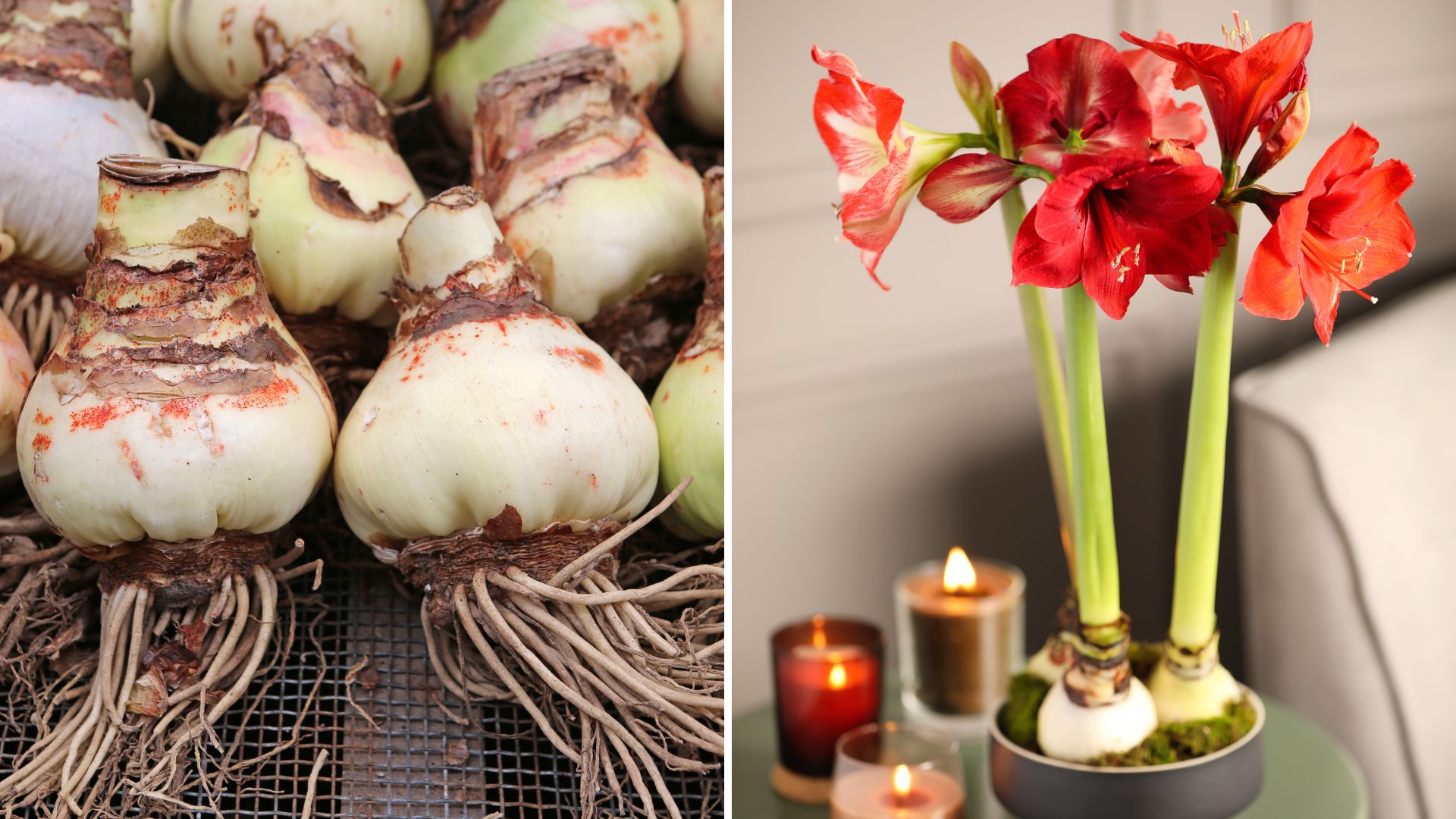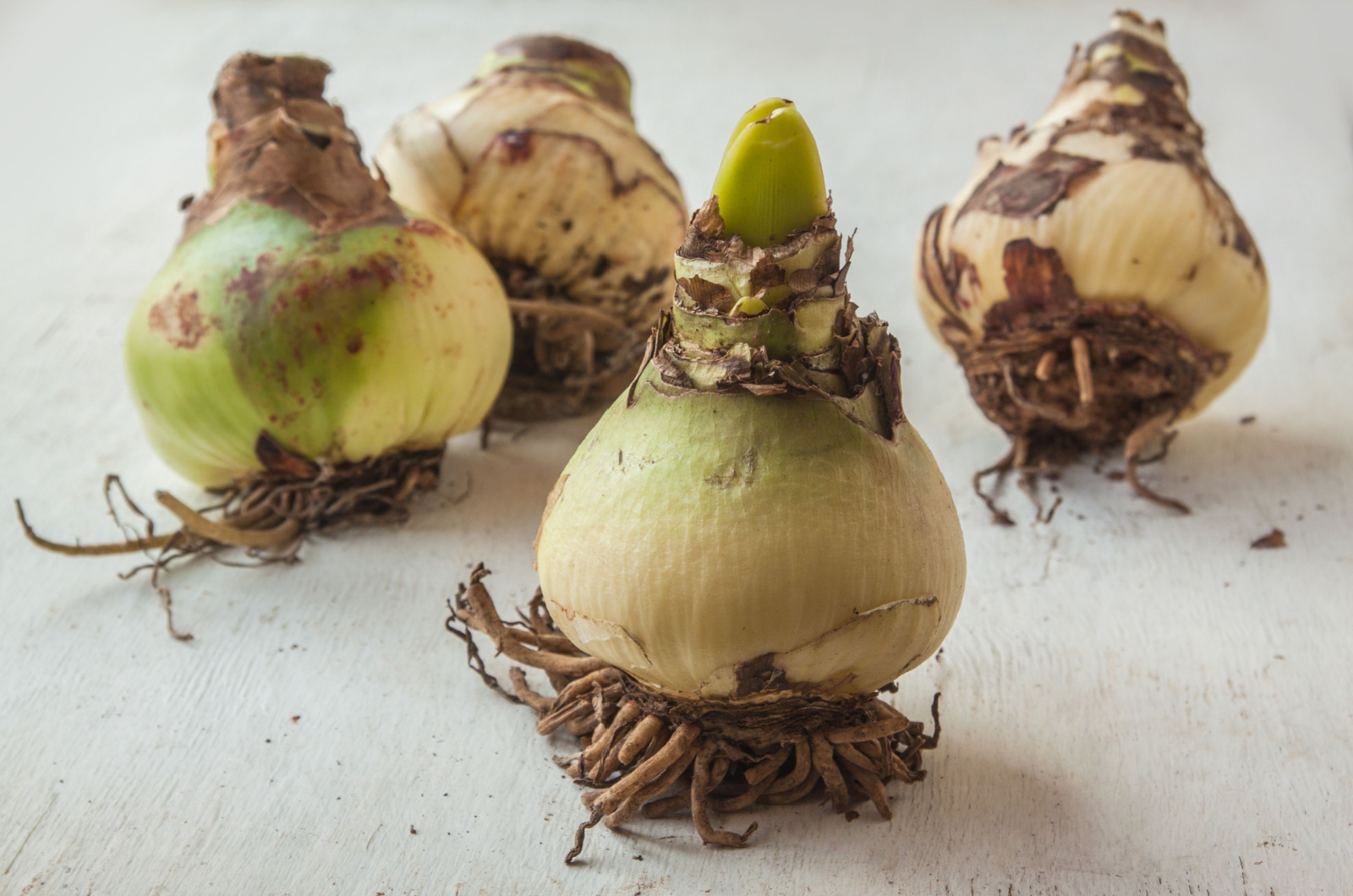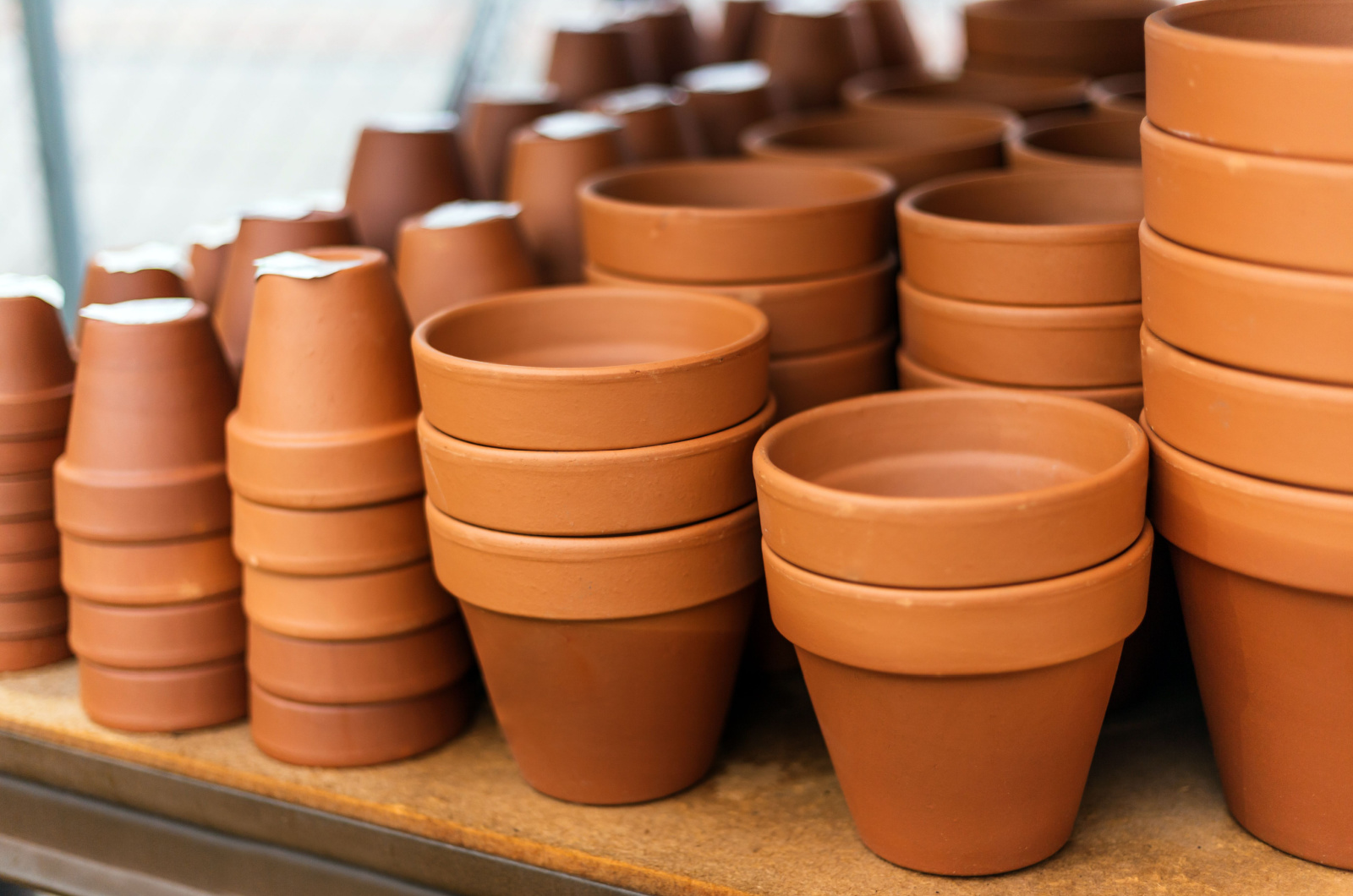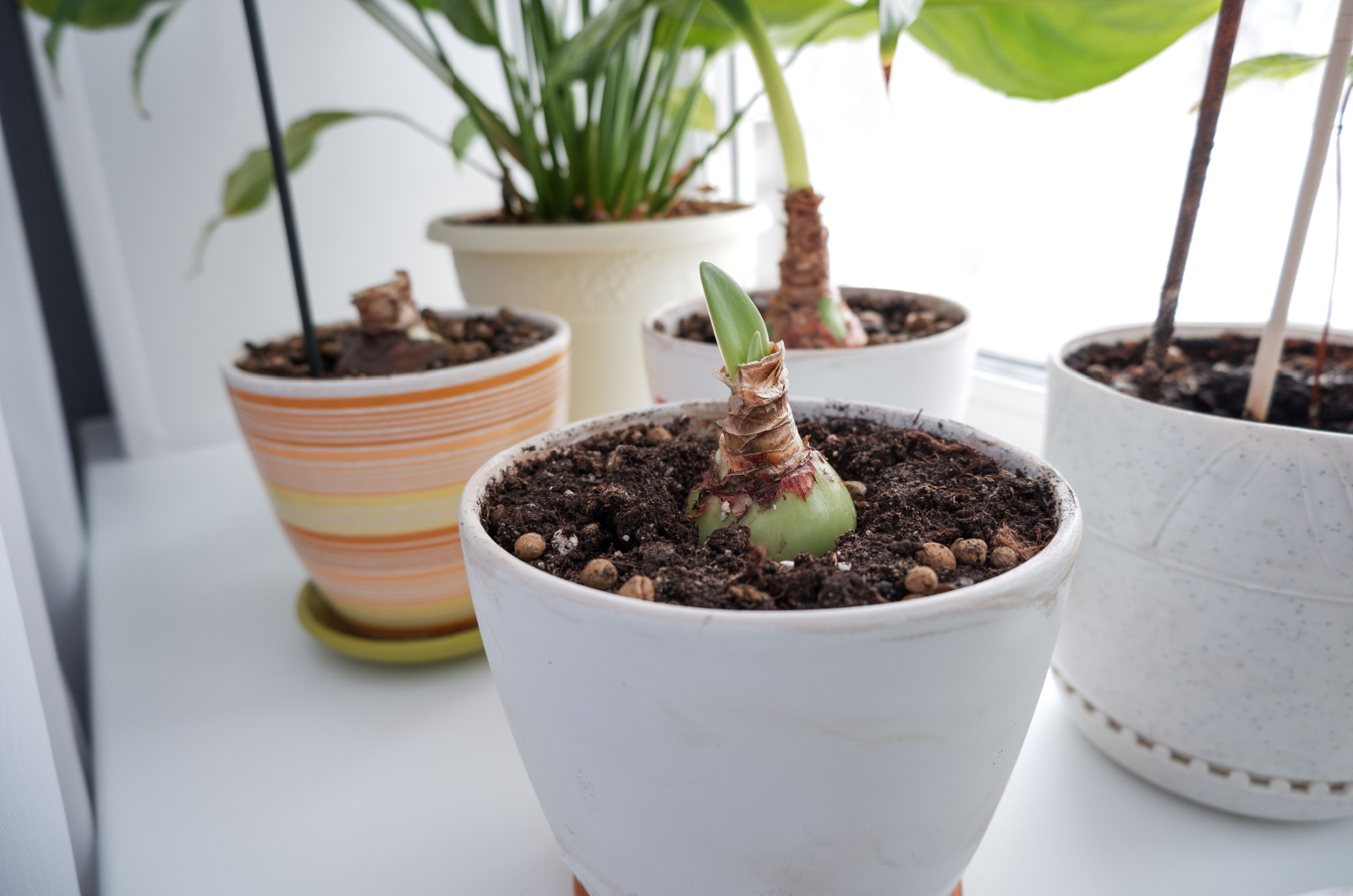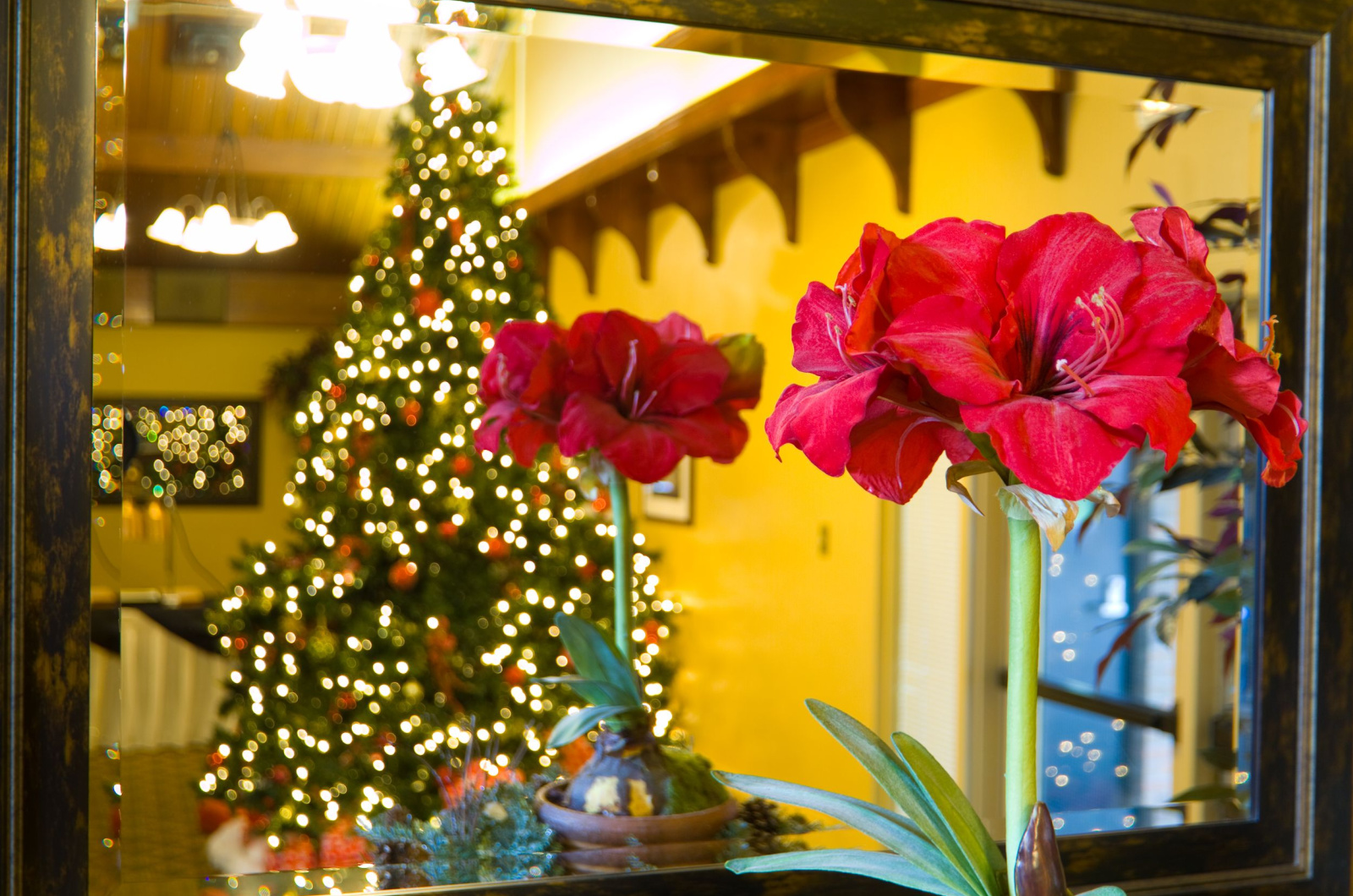Many gardeners save amaryllis bulbs from the previous season. If you’re one of them, I’m sure you’re wondering what to do now!
First, you need to bring it back to life. Christmas is approaching, so it’s essential that you complete the steps on time.
In this article, I’ll show you how to revive your amaryllis bulb in a few easy steps.
Let’s get started!
1. Inspect The Bulb
You can actually choose the time when you want your amaryllis bulb to bloom. For instance, if you take the bulbs out of storage in November, they’ll be ready for blooming during Christmas.
If you do it in early December, you can expect blooms a little later.
The first step in reviving amaryllis bulbs is to inspect them carefully. So, take your bulbs and squeeze them gently. If they’re firm and their outer skin is papery, you have healthy bulbs.
On the other hand, if the bulbs are mushy, there is mold on the outer skin, or the roots are diseased, your bulbs are unhealthy and there’s not much you can do.
2. Clean The Root System
The next step is to clean the amaryllis bulb root system. Your main goal is to remove any excess dirt but be careful not to damage the roots.
I always use a soft nail brush for this purpose but make sure it’s dry before use.
After you get rid of the soil, the next step is to remove the elongated, untidy roots that are closest to the bottom of the bulb.
The best idea would be to leave amaryllis roots that are about an inch long.
3. Select A Pot
Your Christmas plant will need a new pot, approximately 2 inches larger in diameter than the bulb.
Since overly wet soil is the leading cause of rotting in amaryllis bulbs, make sure the selected pot has drainage holes.
You can always go with the classic terracotta pots or select some with adorable festive decorations.
If the pot you like most doesn’t have drainage holes, keep the bulbs in a standard nursery pot. Put a layer of pebbles in a decorative pot and add the nursery pot above.
This method will help you avoid waterlogging and rotting, but make sure you empty the decorative pot after every watering.
4. Add Growing Substrate
Amaryllis plants aren’t finicky over the growing substrate. The essential thing is to select a substrate with excellent drainage.
For instance, if you have ready potting soil at hand, simply add some perlite to improve drainage and put your amaryllis bulb in it.
Alternatively, use coconut coir, which has proven to be amazing for bulbs.
5. Replant The Bulb
After you prepare the pot and fill it with a suitable growing substrate, you can move on to replanting your amaryllis bulb.
Carefully press the bulb into the pre-moistened growing substrate, making sure the upper ⅔ of the bulb stays above the soil surface.
Pack the soil around your replanted amaryllis bulb well.
6. Irrigate
Your bulbs need to be rehydrated at this point, so water them thoroughly. Make sure you let the soil drain well after irrigation to avoid rotting in your amaryllis bulbs.
It’s essential to keep the growing substrate consistently moist in the next few weeks. Never allow the soil to dry out entirely, but be careful it’s not waterlogged.
Simply put your finger in the soil before you water your amaryllis; if it’s dry an inch below the surface, continue watering.
7. Ensure Enough Light
Your amaryllis bulbs will need a lot of sun to rebloom. You should find the sunniest spot in your household; a spot near a south- or west-facing window is ideal.
Just like other blooming plants, amaryllis is sensitive to direct sun, so make sure to select a spot with a lot of bright but indirect light.
If you can’t provide your bulbs with such a spot, I highly recommend using artificial lights.
8. Fertilize Your Amaryllis Bulb
As soon as your amaryllis bulbs display new shoots, you should start with feeding. A balanced liquid fertilizer is an excellent option and you should apply it every few weeks for best results.
Your bulbs need more nutrients to display new and healthy growth. However, you’ll need to supplement them with phosphorus-rich fertilizers, such as bone meal, during the warmer months.
9. Ensure Support
This step isn’t always necessary, so it’s important to observe the development of the buds.
If they are too large compared to the stem, you’ll need to ensure structural support; a bamboo stake or wooden dowel will do a perfect job.
I have to mention that amaryllis stems are robust but the last thing we want is breaking.
10. Control The Temperatures
One of the ways to encourage your amaryllis to generate blossoms during Christmas is to control temperatures.
You can keep the bulbs in a dark room at temperatures ranging from 60 to 65 degrees Fahrenheit a couple of weeks after initial planting.
After the dark and cool period, you can relocate your amaryllis bulbs to a well-lit spot to encourage flower production.
One more thing! Don’t forget to enjoy the magnificent amaryllis blooms during or after the festive season!

